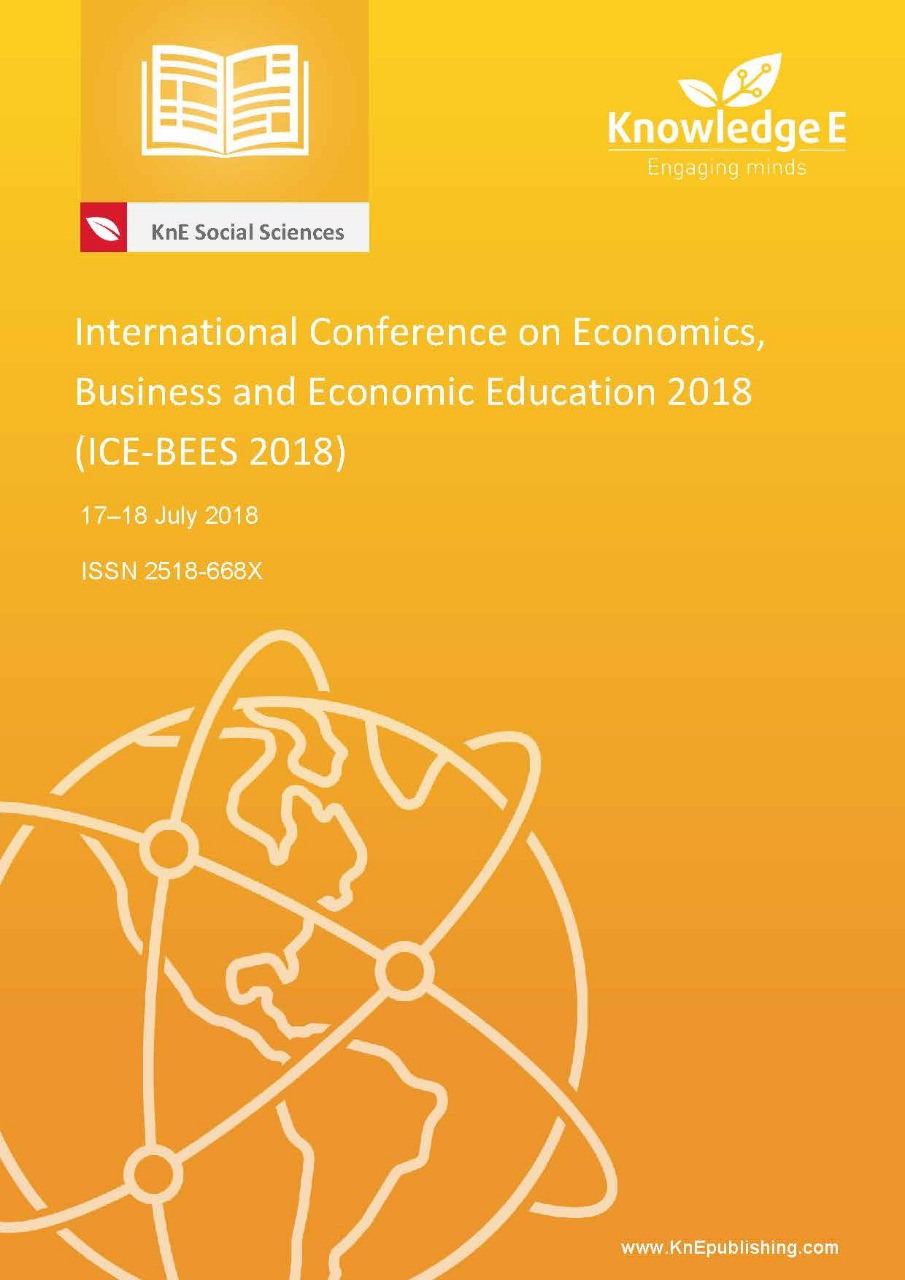Employee Performance Measurement Development Based on Green HRM Indicators
DOI:
https://doi.org/10.18502/kss.v3i10.3201Abstract
The purpose of this study is to develop employee performance indicators based on Green HRM, quantitatively test the influence of Green HRM implementation on employee performance and answer black box that explain how the implementation of Green HRM can improve employee performance through the effect of mediation role (Organizational Identification) and moderation (Perceived Organizational Support). The sample of this research is 90 respondents from six state universities in Central Java Province with simple random sampling technique. Implementation of Green HRM is not only needed in the business world only, but also in education that has committed to implement environmental management system in its business process. The result of this study indicates that employee performance indicators based on Green HRM are formed from policies that support green behavior and green health in the office and also waste management policies. This research also supports the result that the implementation of Green HRM can increase the sense of ownership of employees in the organization that ultimately can improve its performance. However, the role of moderation was not significantly supported. This means that organizational support for successful implementation of Green HRM is not very necessary as long as employees understand the organization’s identity well. Suggestions for this study are, although the organizational support is not proven to moderate the successful implementation of Green HRM on the high organizational identification perceived by employees, but organizational support is still needed to support employee performance.
Keywords: Green HRM, Organizational Identification, Job Performance, Perceived Organizational Support
References
Arulrajah, A. A., Opatha, H. H. D. N. P., & Nawaratne, N. N. J. (2015). Green human resource management practices: A review. Sri Lankan Journal of Human Resource Management, 5(1).
Ashforth, B. E., Harrison, S. H., & Corley, K. G. (2008). Identification in organizations: An examination of four fundamental questions. Journal of management, 34(3), 325- 374.
Ashforth, B. E., & Mael, F. (1989). Social identity theory and the organization. Academy of Management Review, 14(1), 20-39.
Baried, A. B., Septarini, N., & Rahman, W. I. (2012). Analisis Pengaruh Kebijakan Campus Social Responsibility terhadap Kesejahteraan Masyarakat Sekitar (Studi Kasus Tiga Perguruan Tinggi Negeri di Surabaya). Prosiding Seminar dan Konferensi Nasional Manajemen Bisnis.
Cherian, J. P., & Jacob, J. (2012). A study of green HR practices and its effective implementation in the organization: A review. International Journal of Business and Management, 7(21), 25.
Dai, K., & Qin, X. (2016). Perceived Organizational Support and Employee Engagement: Based on the Research of Organizational Identification and Organizational Justice. Open Journal of Social Sciences, 4(12), 46-57.
Demir, K. (2015). The Effect of Organizational Justice and Perceived Organizational Support on Organizational Citizenship Behaviors: The Mediating Role of Organizational Identification. Eurasian Journal of Educational Research, 60, 131-148.
Dutton, J. E., Dukerich, J. M., & Harquail, C. V. (1994). Organizational images and member identification. Administrative Science Quarterly, 39, 239-263.
Erdem, H., Gökmen, Y., & Türen, U. (2015). Mediating Role of Perceived Organizational Support on the Impact of Psychological Capital on Organizational Identification. İşletme Araşt
Eisenberger, R., Huntington, R., Hutchison, S., & Sowa, D. (1986). Perceived Organizational Support.Journal of Applied Psychology, 82(5), 812-820
He, H., & Brown, A. (2012). Organizational Identity and Organizational Identfications: A review of The Literature and Suggestions for Future Research. Tesis. University of Warwick.
He, H., Wang, W., Zhu, W., & Harris, L. (2015). Service workers’ job performance: The roles of personality traits, organizational identification, and customer orientation. European Journal of Marketing, 49(11/12), 1751-1776.
Jiang, K., Lepak, D. P., Hu, J., & Baer, J. C. (2012). How does human resource management influence organizational outcomes? A meta-analytic investigation of mediating mechanisms. Academy of Management Journal, 55, 1264-1294.
Obaid, T. F., & Alias, R. B. (2015). The impact of green recruitment, green training and green learning on the firm performance: conceptual paper. International Journal of Applied Research, 1(12), 951-953.
Opatha, H. H. D. N. P., & Arulrajah, A. A. (2014). Green human resource management: Simplified general reflections. International Business Research, 7(8), 101-112.
Purwanto, B. (2010). Manajemen Sumber Daya Manusia Berbasis Proses: Pola Pikir Baru Mengelola Sumber Daya Manusia. Jakarta: Grassindo
Renwick, D. W., Redman, T., & Maguire, S. (2013). Green human resource management: A review and research agenda. International Journal of Management Reviews, 15, 1-14.
Rhoades, L., & Eisenberger, R. (2002). Perceived Organizational Support: A review of the literature. Journal of Applied Psychology, 87, 698-714.
Shore, L. M., & Shore, T. H. (1995). Perceived organizational support and organizational justice. Organizational politics, justice, and support: Managing the social climate of the workplace, 149, 164.
Smidts, A., Pruyn, A. T. H., & Van Riel, C. B. M. (2001). The impact of employee communication and perceived external prestige on organizational identification. Academy of Management Journal, 44, 1051-1062.
Setiawan, B. (2012). Peran Manajemen Sumber Daya Manusia Stratejik Terhadap Kinerja Perusahaan (Studi Kasus Pada Perusahaan Jasa PT. X di Sidoarjo). Skripsi. Manajemen Unika Widya Mandala Surabaya.
Shen, J., Dumont, J., & Deng, X. (2016). Employees’ perceptions of green HRM and non-green employee work outcomes: The social identity and stakeholder perspectives. Group & Organization Management, 1-29.
Tajfel, H., & Turner, J. C. (1979). An integrative theory of intergroup conflict. The social psychology of intergroup relations, 33(47), 74.
Veithzal Rivai (2005). Manajemen Sumber Daya Manusia. Jakarta: Raja Grafindo Persada.

